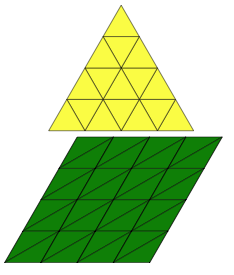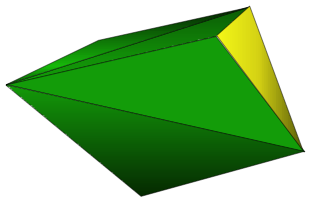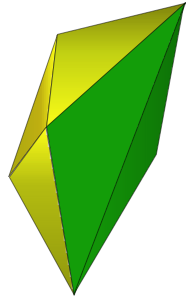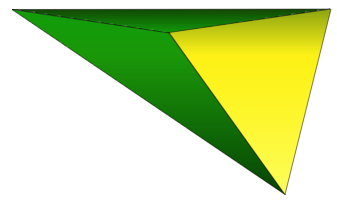Copyright © University of Cambridge. All rights reserved.
'Triangular Faces' printed from https://nrich.maths.org/
Show menu
Why do this problem?
This activity encourages children to visualise 3D shapes and will help to reinforce language associated with properties of shapes.Possible approach
You could introduce the problem by creating a simpler model of your own, made from the triangles (perhaps a tetrahedron). Show it to the class (making sure you turn it around for them to see it from different directions) and ask them what questions they would ask if you challenged them to make an identical model themselves. They might suggest:- How many faces (or how many triangles) does the shape have?
- Are all the faces (or triangles used) the same?
- How do the faces join to each other?
The children could try to make a tetrahedron and then you could look at its net together before moving on to the more complex shapes in the main problem.
As they engage with the practical element of this task, give children freedom to "change their mind" if they make a mistake, allowing them to take the triangles apart again. This act of varying and altering is an important mathematical process. As you look together at the nets they create (which could be recorded on paper), children may discover for the first time that a shape's net can be
drawn in several different ways.
Finally, you could ask the class to make some 3D shapes of their own, perhaps in pairs. Two pairs could then join together to see if they can each make the other's shape after they have had a good look.





